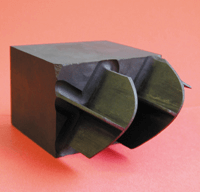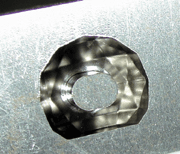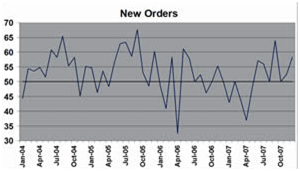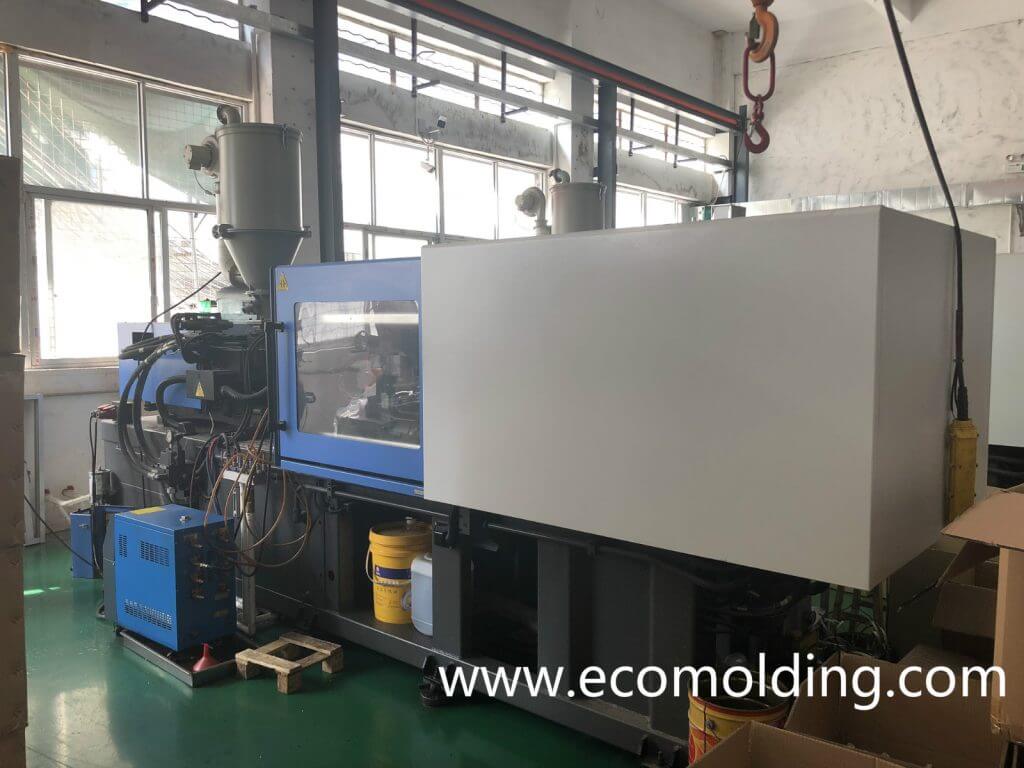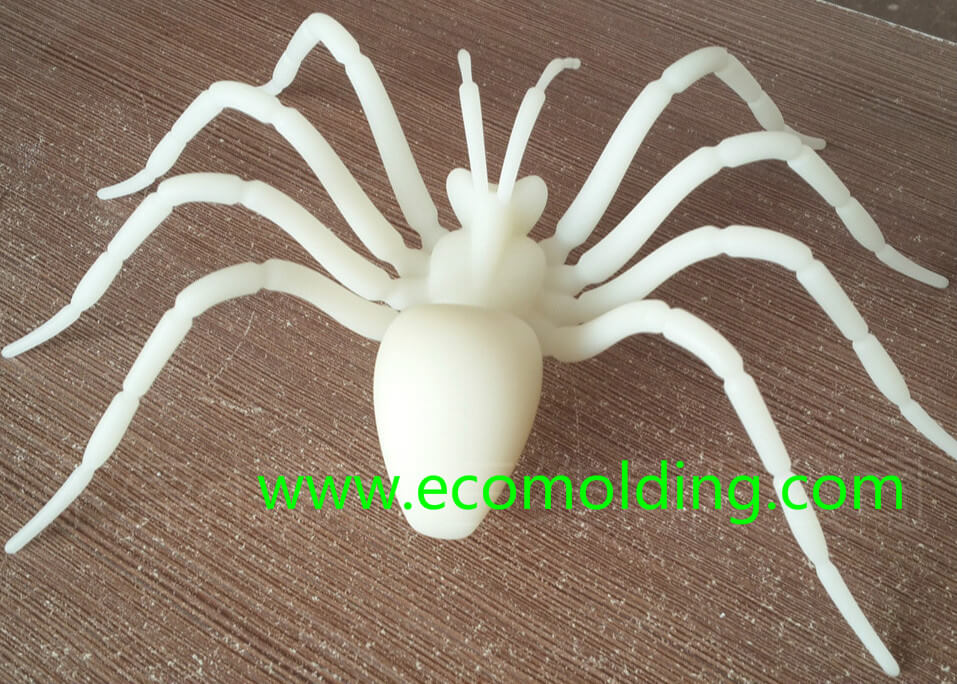The primary driving force in NC software is to improve user productivity by producing software that is easier to learn and use, more automated and more tightly integrated with design software. This includes support of enhanced user interfaces, integrated surface and solid modeling, improved customization and integration tools, support of high-speed machining and knowledge-based machining, shop floor programming, and improved techniques to communicate, collaborate and manage information up and down a supply chain.
According to a recent worldwide study of moldmakers, the most important CAM software function was found to be strong three-axis milling. This was followed in order by strong roughing, integration with design software, a Windows-compliant user interface, associativity between design and NC, integrated toolpath verification and an effective post processor generator with supporting libraries. Within three-axis milling, the most significant features cited by users in order of importance were support of high-speed milling, effective gouge avoidance, user programming flexibility, automatic re-machining of uncut areas and machining over non-manifold surfaces.
NC Software Trends and Observations
As manufacturers re-evaluate their operations, software vendors also must reassess their priorities and place even greater emphasis on a strong programming strategy that focuses on improved user productivity. More specific NC software trends and observations include the following:
Software Breadth
The breadth of software that is provided by any given supplier continues to increase to meet the broader need of manufacturers. Therefore, opportunities for one vendor to augment installed products from another vendor have decreased. Major CAD/CAM vendors have a broad product line, often filled with third-party products.
Evolution to a New Technology Base
Many companies that have provided NC software over an extended period of time have produced totally new technology systems.
Process Focused
Software is evolving from the use of basic instructions – e.g., draw a line or create a fillet – to process automation.
Design Data Analysis
Some companies provide an analysis function to examine incoming electronic models for non-manifold conditions and for analyzing design data for manufacturability. The software detects overlapping surfaces, surfaces left out, twisted surfaces, gaps, holes, negative draft angles and undercuts.
Support of STL Files
Stereolithography tessellation language (STL), refers to the presentation of 3-D forms as boundary representation solid models constructed entirely of triangular facets. The complete definition is based on a triangle.
Importance of Speed
Speed in toolpath generation and efficient toolpaths to provide speed in machining is becoming increasingly important. As most products now have adequate functionality, speed can be more important than new functionality.
Software Automation
Greater software automation is being provided throughout a product. With the continuing demand for ease of use and increased productivity, greater automation is being embedded into all aspects of a product, from the user interface to the post processors. The software is doing more and the user is doing less.
Solid Design, Import and Machining
Solid-based design is not new. The concept was developed in the mid-1980s and became popular in the late 1980s. Major CAD/CAM vendors soon came out with solid-based design systems. Currently, most CAM software vendors now support, in one way or another, design, import and direct machining of solid models. Typically, the solid models are tessellated and machining is done on the tessellated model. Working with solid models is clearly the wave of the future.
Knowledge-Based Machining
Automation has been extended to that of knowledge-based machining (KBM). KBM is becoming a well-recognized technology. It is the centerpiece technology for implementation of semi-automatic and automatic generation systems. Moldmakers surveyed believe that KBM will increase programming productivity and consistency, and will result in an improved quality of product.
Automatic Feature Recognition
Automatic feature recognition (AFR) software can be used to examine a model, determine which features exist, and extract the features for subsequent processing. AFR can be an important component in KBM. This function allows CAM software to identify similar shapes and geometric features quickly in a part model.
Machining on Triangular Facets
In multi-surface machining, some vendors provide an option to machine on the true surfaces or solids, while most other vendors convert the part into a tessellated model and machine on the facetted model.
Support of High-Speed Machining
Software support of high-speed machining is becoming mandatory in mold and die machining. Most shops now employ this technique. The software to support this technology must provide for fast and efficient transfer of data, smooth tool movement that minimizes any sudden change in direction, a constant chip load to maximize the life of the cutter, and those machine tool features necessary to produce gouge free, high surface finish parts. Surfaces must be tangent without gaps or overlaps. Machining is sometimes done on the actual surfaces as opposed to tessellated surfaces to obtain a quality output. However, it should be pointed out that quality problems sometimes occur with high-speed machining. The material can overheat, cracks can develop and the material can move.
NURBS Interpolation
NURBS interpolation or spline machining is one of numerous functions that are appropriate for high-speed machining. In spline machining, machining of a curved surface is carried out as a series of B-splines or NURBS curves, rather than the traditional method of generating a series of straight lines or arcs between a set of points. The equation of the spline can be supplied to the controller, thereby reducing the amount of data transfer.
The advantages of spline machining are that the tolerance stack-up that occurs when splines are fitted to straight line cutter paths is minimized, tool movements are more consistent – which reduces dwell marks – the file size is typically reduced by approximately 50 percent and fewer points are required to define a curve. In essence, NURBS interpolation typically results in shorter cycle times, smaller programs, more accurate parts and better surface finishes.
Feedrate Optimization
Typically, high-speed machining is accomplished with very small axial cut depths in order to achieve good surface finish and avoid damage to the cutter, workpiece or spindle. Feedrate optimization software can be employed to achieve better cutting efficiency with greater axial depths at the high feedrates of HSM and protect the cutter, etc., in those few places where the chipload momentarily increases. Constant-chipload toolpaths allow optimum use of the cutter’s strength and the machine’s speed and power. The software detects conditions where the chipload is too great and adjusts the feedrate to a more reasonable level. It then returns the machine to the higher feedrate when the chipload permits.
Re-Machining of Uncut Material
Re-machining of uncut material in three-axis milling is an important automation technique in mold and die machining. It is now available from most vendors targeting this market. The software typically locates uncut material left behind from a previous cut, places a boundary around the area, and displays the area of uncut material. Determining where the material is left is either done by examining the previous tool used relative to the model or by generating an in-stock model. The software also may suggest the appropriate tool size to fully remove the material. The software automatically generates a toolpath to remove only the uncut material, as opposed to re-machining the entire area. Re-machining can be applied to either roughing or finishing operations.
More Three-Axis Milling Strategies
Vendors continue to add optional three-axis milling strategies. For example, recently introduced strategies include:
Interleaved toolpaths in which the software automatically puts one type of toolpath in the open areas of another.
Helical machining that circles an object like peeling a potato.
Trochordal toolpath in which overlapping circles are half on and half off the material.
A projecting toolpath in which a toolpath is aimed from a point or line in space.
Combination Cuts
The use of combination cuts is being used in mold and die machining software. Molds and dies often have steep and flat areas. As such, it may be desirable to cut these two areas with different machining strategies in one or two toolpaths. A downside to machining in a single toolpath is that the same cutting tool is required for both strategies, and this is often not appropriate. In any event, the software should be able to separate flat areas from steep areas based on a specified angle. They can then be machined with two different strategies.
More Stepover Options
One software vendor has become an industry leader in providing a variety of stepover options; of particular note are its 3-D equidistant, maximum on part and the view direction stepover options. In the 3-D equidistant stepover, a stepover distance is measured on the surface of a part as compared to a plane above the surface. The maximum on part and view direction options appear to be unique. The maximum on part stepover is appropriate when machining between two non-parallel contours. The view direction stepover is particularly appropriate for machining of vertical walls.
Five-Axis Machining
Simultaneous five-axis machining has been used forever in aerospace applications and turbine blade manufacture. However, its use in mold making is expected to increase, as it is replacing the use of three-axis milling in some situations. This is occurring because the price of five-axis machines is declining, the number of setups can be reduced, and newer five-axis software is more effective. In a survey of moldmakers, nearly 65 percent of worldwide moldmakers stated that their use of five-axis machines would increase, while only 35 percent believed that their use would remain steady.
Reverse Engineering
Software designed to support reverse engineering has emerged. The software must be able to:
Accept a cloud of points produced by a scanner.
Edit the points to eliminate stray points and smooth the model.
Tessellate the points into triangles, merge and blend the data into a CAD model.
Generate surfaces from the points.
Edit and modify the surfaces to create a new part design.
Most reverse engineering can be done without making a prototype. A CMM machine and CAD/CAM software can be used to capture the geometry of a part, visualize it in 3-D form, carry out design changes, test it for engineering performance and simulate its manufacturing and inspection cycles.
Integrated Verification and Post Processing
Verification software and post processing are being integrated with toolpath generation. The user often operates with Windows open to toolpath verification and generation concurrently on the screen. This permits quick movement back and forth between the functions. The effect of toolpath changes can be viewed almost instantaneously. Also, the integration of the post processor into the toolpath generation module is becoming more common.
Third-Party Products
All vendors are increasing their product breadth, often through the licensing of third-party products. Each vendor must define and establish the core elements that are strategic to them. Within the strategic circle, products are usually internally developed. Outside the strategic circle, third-party products are often licensed. CAM vendors often obtain post processor generators and/or NC verification and simulation packages from third-party vendors. This has evolved into a significant sub-market.
STEP-Driven Manufacturing
The concept of STEP-driven manufacturing or STEP-NC is defined as the process of utilizing an unambiguous, neutral, computer-interpretable electronic digital representation to effectively communicate among dissimilar CAD/CAM/CAE/PDM systems and produce timely, cost-effective manufacture of quality products. The STEP-NC system allows CNC machines to be controlled by product design data. It captures and builds on knowledge already in the part mold.
The intent is to define industry standard manufacturing features in the STEP intermediary CAD file format, and then enable the controlling devices on manufacturing machines to read these features for more efficient part generation with NC machines and dynamic re-planning. In essence, one sends a CAD file directly to a controller, bypassing the NC programming function.
Full Automation
Ultimately, CAM software will run completely automated and unattended, converting part models into G-Code programs for machine tools. By using KBM concepts to embed machining intelligence into the CAM software, it will be possible for the software to automatically select the machining processes, speeds and feeds, and cutting tools, and then automatically create the final G-Code program. The software will be able to learn from experts in each shop their preferred methods for manufacturing different parts and then apply these techniques for the programming of subsequent parts.
